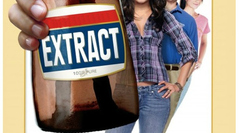
This post introduces what I hope will be a weekly feature of my blog--if my deteriorating memory allows me to remember an intention that long!
As a writer, and a publisher--and as a Writing and Publishing Coach--I often find myself searching for, and finding solutions to problems that don't come up that often, but that I can't help but feel must be "out there," and that I think my readers may find helpful, either now or in the future.
The other day I received a Word document with about twenty images, screen captures in it. Now, I could have asked the person to resend me the screen captures in a zip file, but I know that most people don't like to resend things, especially if it takes a significant amount of time to prepare them--again. Especially when sending them the first time involves a non-trivial amount of work to begin with.
So, I knew I could just right-click each picture and save it. But that seemed a bit tedious and un-technological. So I turned to Google, and in a few minutes had found this neat little trick.
With Word 2007, Microsoft introduced the XML-based .docx file format. The new format is essentially a ZIP container, which contains a series of XML files and any embedded images. When trying out any new operation on a file, make sure you have copied the file to somewhere else for safekeeping first.
To access the embedded images in a .docx file, use the following steps:
So perhaps one day, a friend or associate will send you a Word document with several images, and you want a quick way to get them out of the file. "Oh yeah," you'll think, "Len blogged about that. I'll just go to the main page of lenhodgeman.com, type "extract" in the Search box at the top of the screen, and BINGO--there it is! Way cool.
If you should get a chance to use this tip, please let me know by commenting on this post, or dropping me an email through the Contact form on the website.
As a writer, and a publisher--and as a Writing and Publishing Coach--I often find myself searching for, and finding solutions to problems that don't come up that often, but that I can't help but feel must be "out there," and that I think my readers may find helpful, either now or in the future.
The other day I received a Word document with about twenty images, screen captures in it. Now, I could have asked the person to resend me the screen captures in a zip file, but I know that most people don't like to resend things, especially if it takes a significant amount of time to prepare them--again. Especially when sending them the first time involves a non-trivial amount of work to begin with.
So, I knew I could just right-click each picture and save it. But that seemed a bit tedious and un-technological. So I turned to Google, and in a few minutes had found this neat little trick.
With Word 2007, Microsoft introduced the XML-based .docx file format. The new format is essentially a ZIP container, which contains a series of XML files and any embedded images. When trying out any new operation on a file, make sure you have copied the file to somewhere else for safekeeping first.
To access the embedded images in a .docx file, use the following steps:
- If the file is not already a .docx file, open the file in Word 2007 (or higher) and save it as a Word Document (*.docx).
- In Windows Explorer, change the file extension on the original file from .docx to .zip.
- Now double-click on the file. It should display the files and folders inside the zip file, including a "word" folder, and inside that a "media" folder. Within the media folder--voila--all of the images in the document!
So perhaps one day, a friend or associate will send you a Word document with several images, and you want a quick way to get them out of the file. "Oh yeah," you'll think, "Len blogged about that. I'll just go to the main page of lenhodgeman.com, type "extract" in the Search box at the top of the screen, and BINGO--there it is! Way cool.
If you should get a chance to use this tip, please let me know by commenting on this post, or dropping me an email through the Contact form on the website.

 RSS Feed
RSS Feed